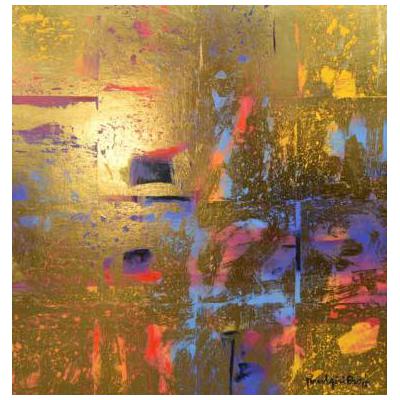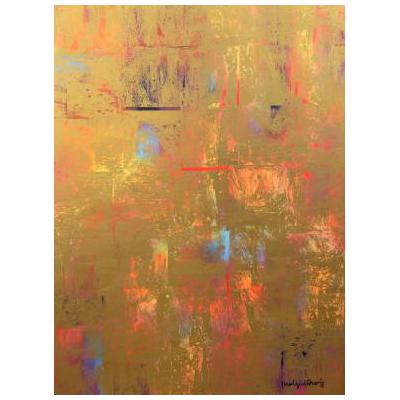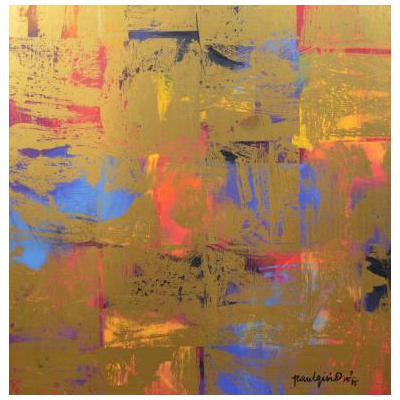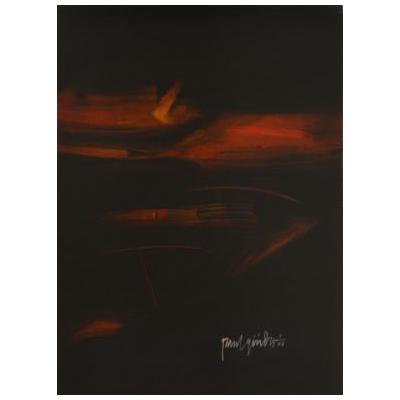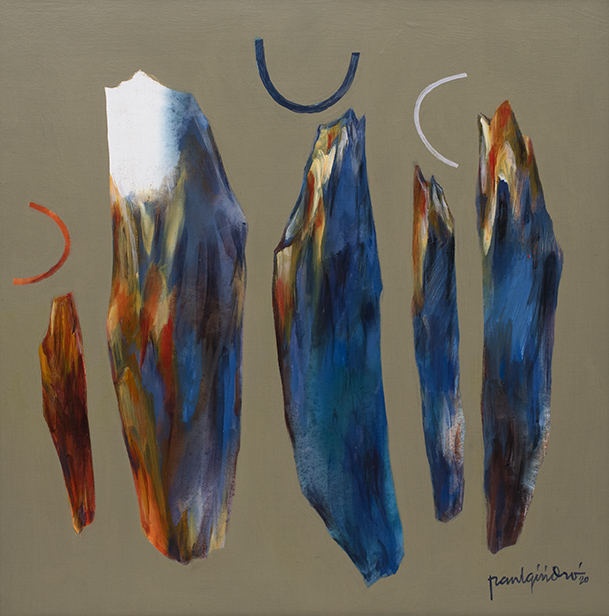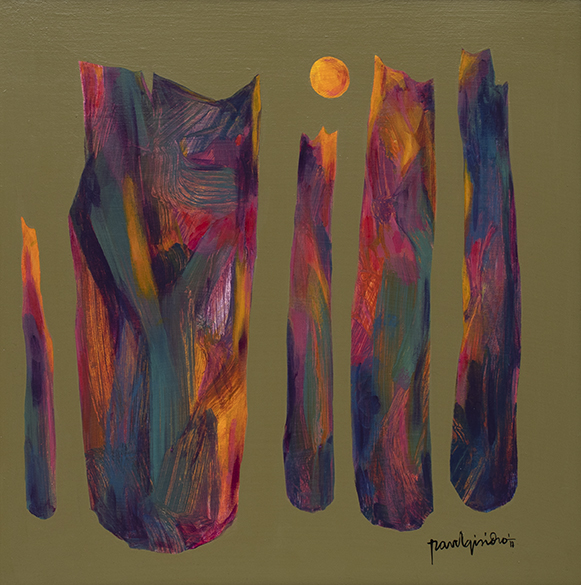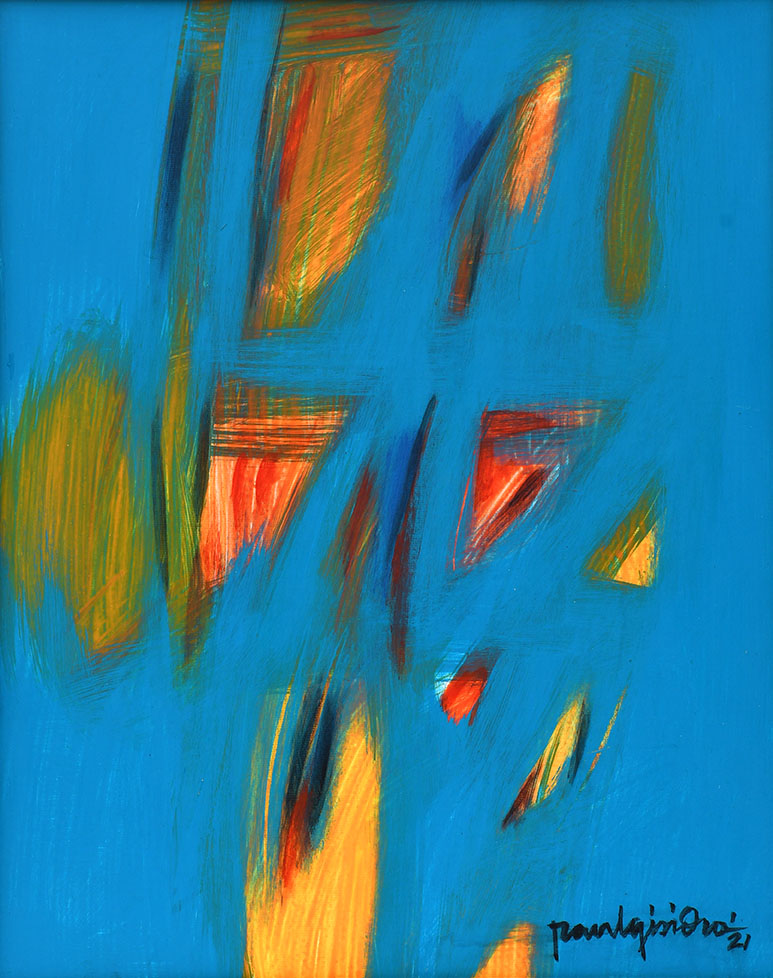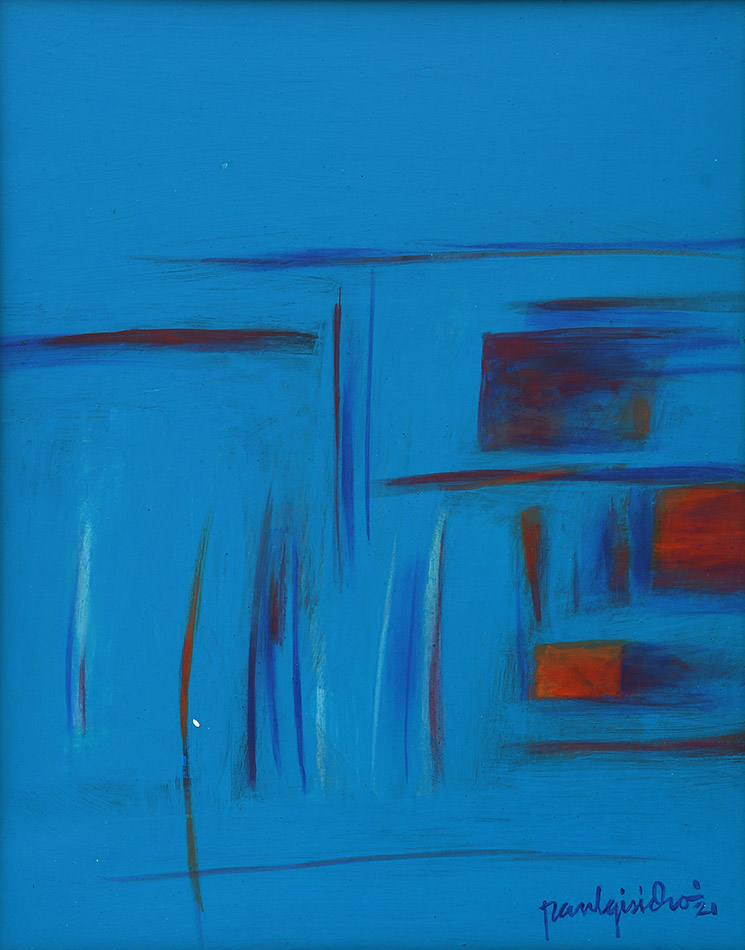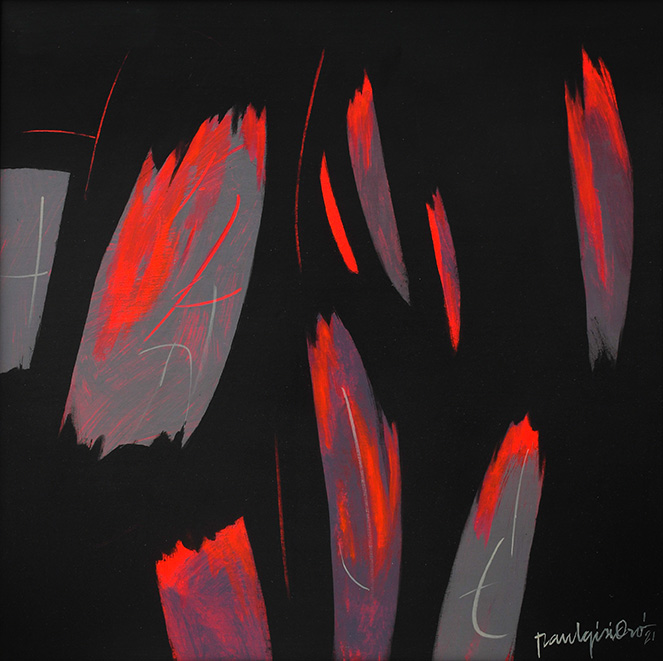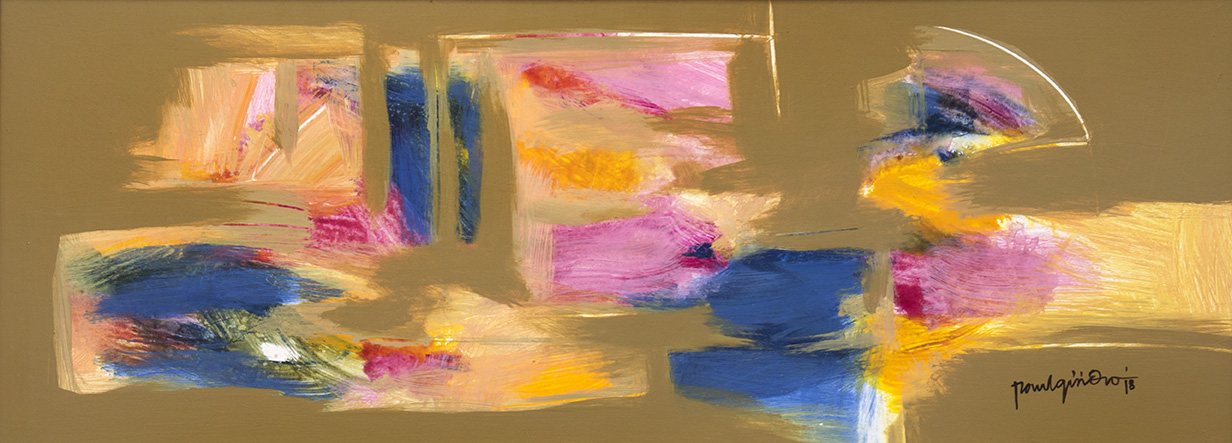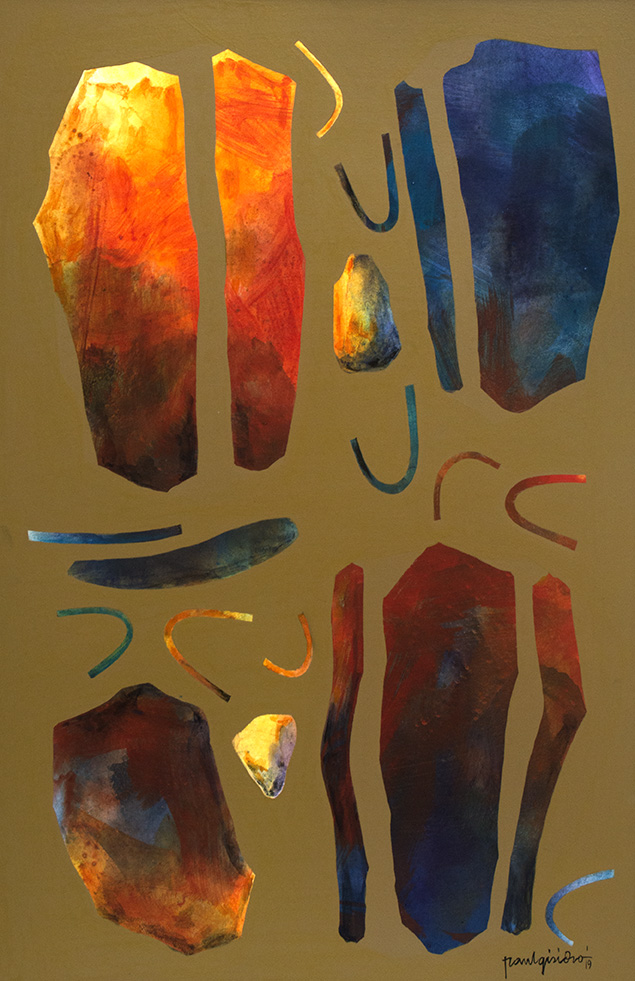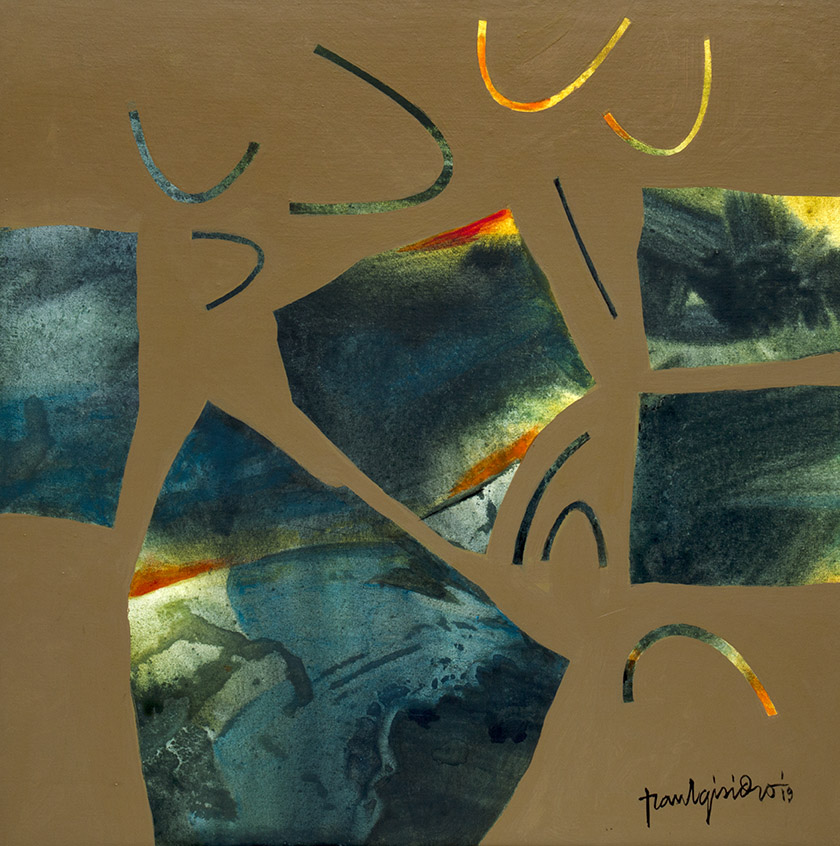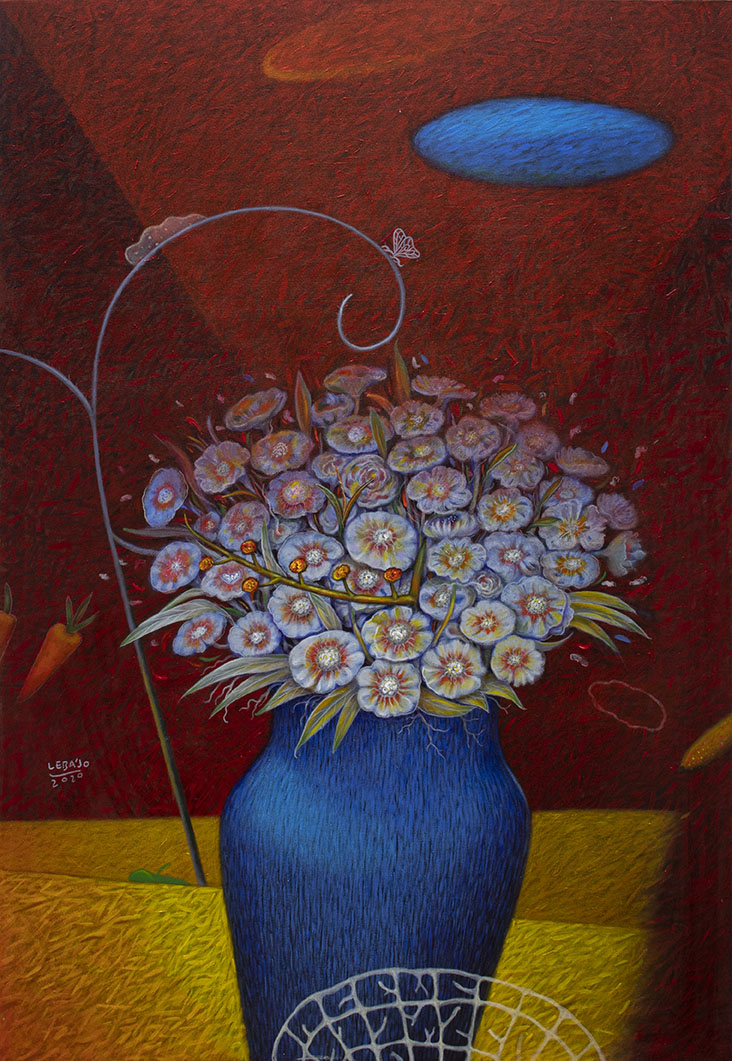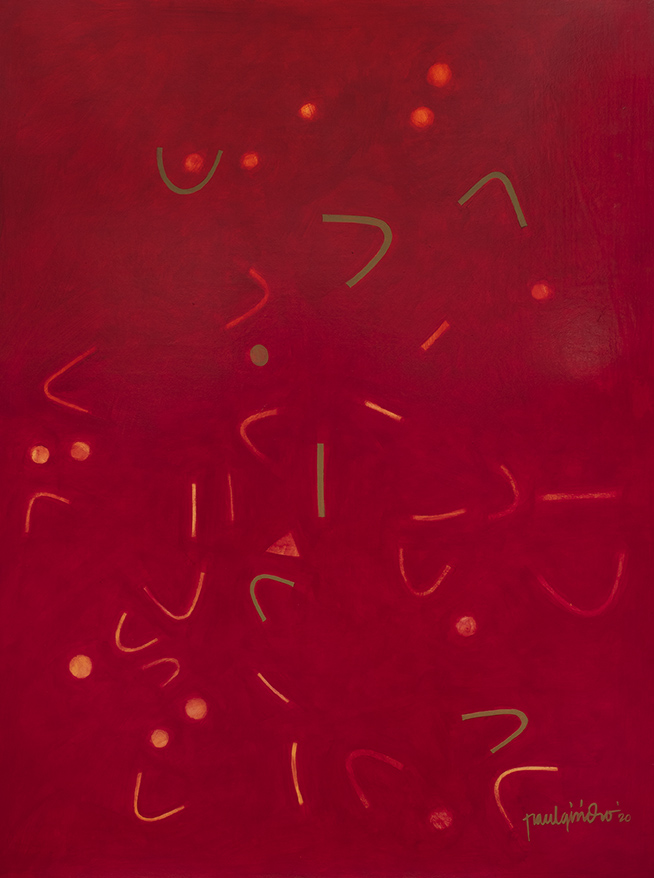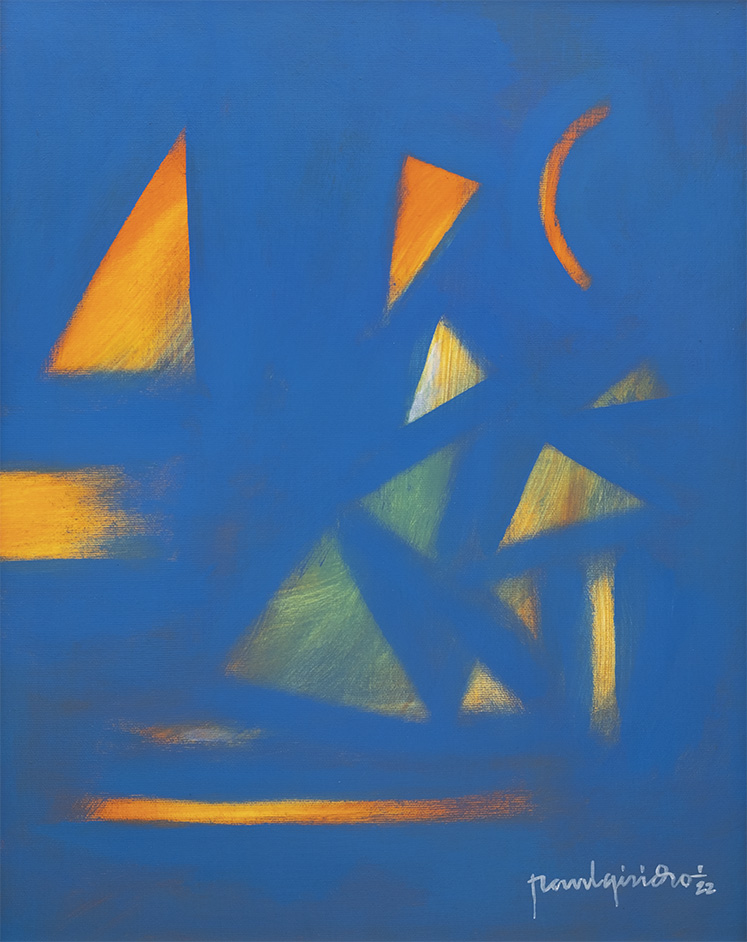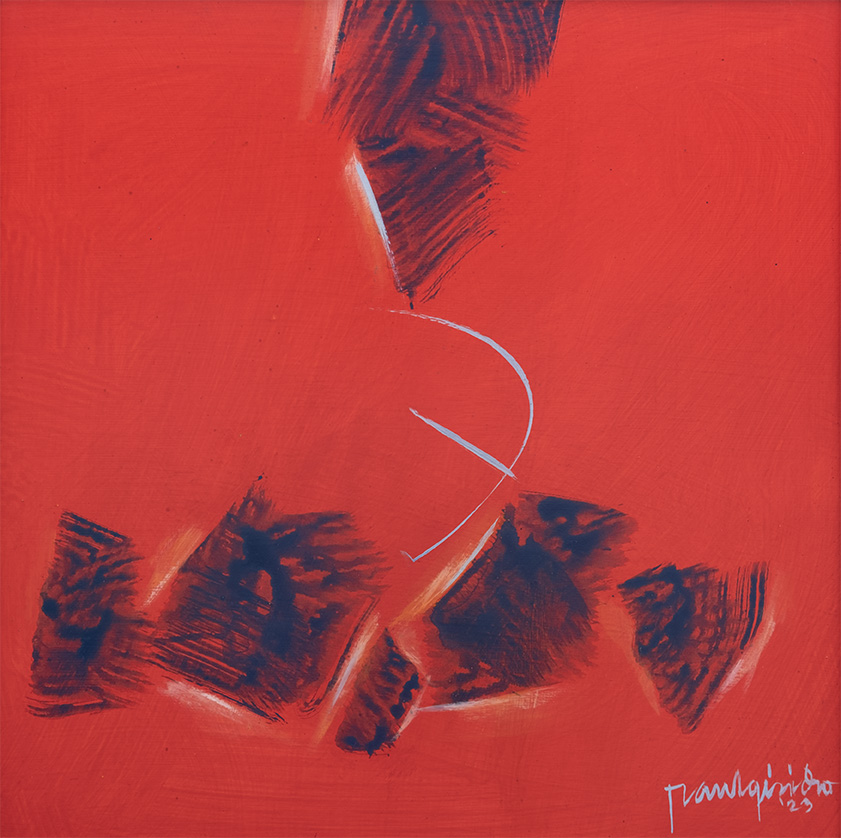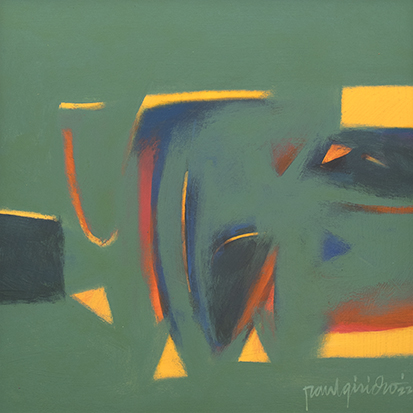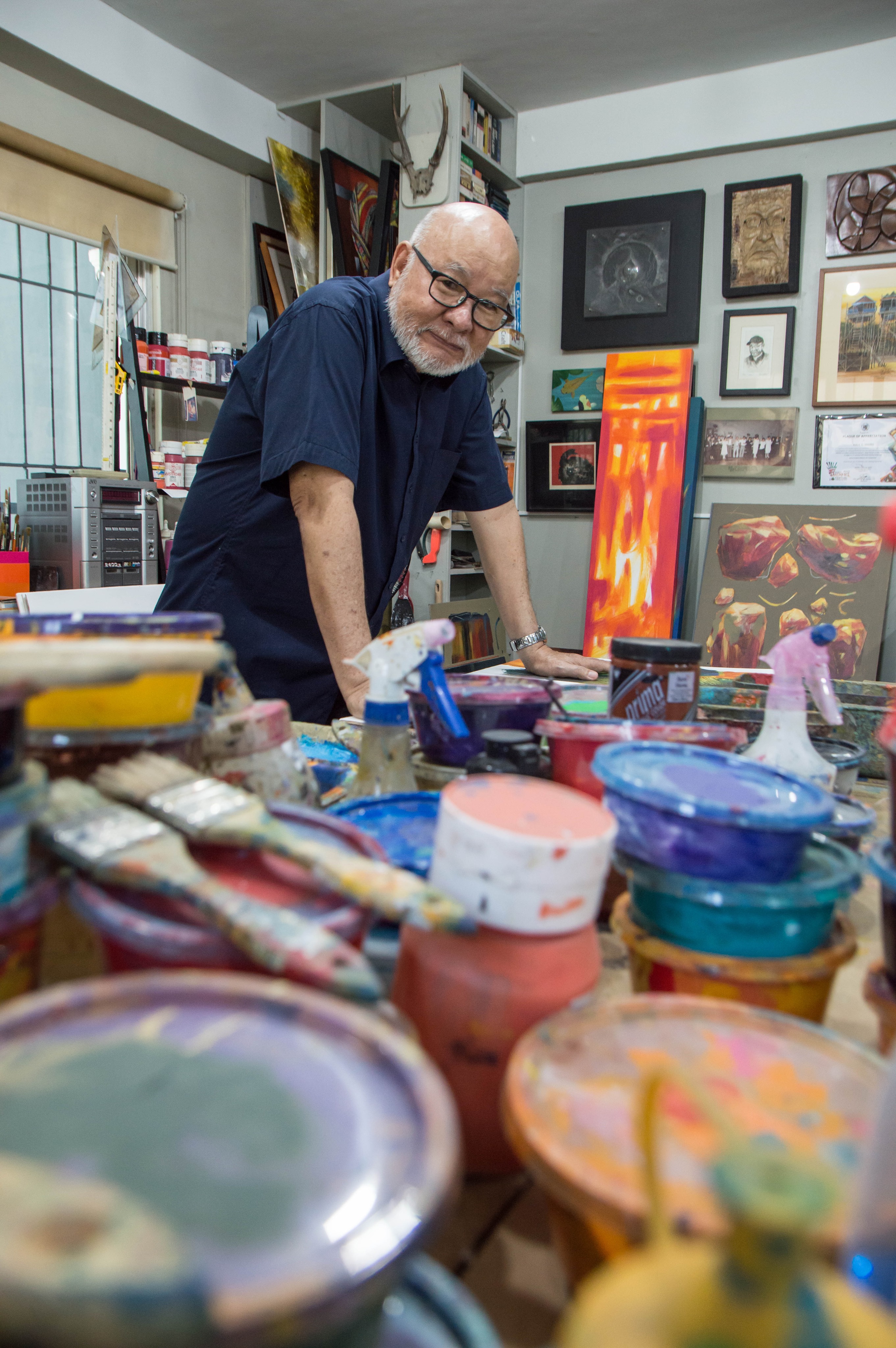
In his Mid-seventies, Raul Isidro can successfully lay claim to being one of the most senior living Filipino visual artists of our time. The 1979 TOYM and 2006 Outstanding Thomasian Awardee has not given a day’s rest since his first burst to fame in the late Sixties and early Seventies with his distinct abstractions that derive their inspiration from nature. As Armando Manalo once wrote, Isidro was like National Artist Benedicto Cabrera, Rodolfo Samonte, and Mars Galang among the brightest stars of the Philippine Modern Art filament of the 1970s. This distinction was borne out of two inspiring moves: to anchor his work on abstract meditations of natural phenomena, and to instill in his memory the vibrancy of his idyllic childhood spent in the magnificent isolation of Calbayog, Northern Samar.
Known for his trademarked circular paintings with deep red gestural strokes and segmented shaped forms that he lightheartedly refers to as his Pakwan series, Raul Isidro’s backstory is as compelling as any Filipino’s who had to overcome great odds to survive and prosper. Spending his youth in Calbayog gave the young Raul fortitude and the sense of independence needed to survive the often-hard weather and living conditions. Coming to Manila to study at University of Santo Tomas for a degree in Fine Arts, Isidro imbibed the spirit of Modernism via mentors like National Artist Victorio Edades and Angelito Antonio. Among his classmates at the UST were the master of brass sculpture Ed Castrillo and glass master sculptor Ramon Orlina. Among his early colleagues in the art scene were surrealist Raul Lebajo and Lamarozza. His sense of adventure and artistic direction was also set by his friendship with Manuel Rodriguez, Sr. who introduced him to printmaking. A lifelong passion for Raul, it was through the unconventional techniques of printmaking that first garnered for him accolades at the Shell National Student Art Competition. His first solo show at La Solidaridad Gallery in 1969 alerted critics to his unique ability to fuse technique with a naturalist sensibility that was linked to another Modern free spirit, the National Artist Jose Joya.
In 2014, Raul Isidro continues to amaze audiences by his formal adaptation of abstract techniques that evolve into more surprising interpretations of nature. The sea rocks that jut on the breakwater of Calbayog when the artist was a boy. These indomitable creations of nature are associated by Isidro with virtues of determination and fortitude, and symbolize the strength needed to overcome adversities thrown our way by fate. Inscribed in each “rock” is a history of strokes and careful maskings that Isidro has overlain to produce a richly textured painting that reverberates in both natural simplicity and stylistic sophistication. Indeed, to master the art of painting rocks without showing them as such is a testament to the mastery of a Filipino Modernist like Raul Isidro.
Artworks
